 Dragonflies and their Life Cycle
Dragonflies and their Life Cycle
News > Dragonflies and their Life Cycle >
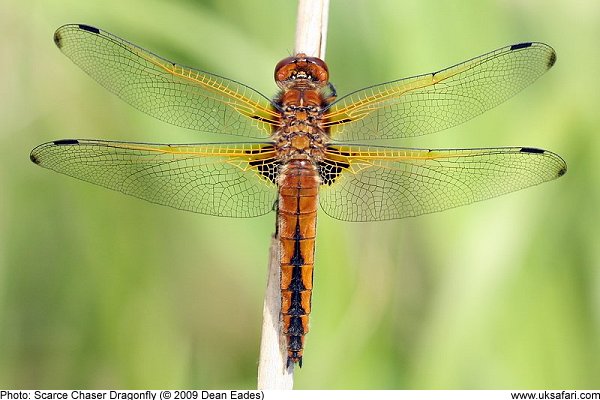
Dragonflies belong to the order of insects known as 'Odonata' which in ancient Greek literally meant "toothed jaw". They are some of our largest insects, and are also among the most ancient of living creatures. Fossil records of dragonflies go back almost 300 million years to Carboniferous times. They predate Pterodactyls by 100 million years and birds by around 150 million years.
If you take a pair of binoculars to your local lake or stream you can enjoy watching these living dinosaurs zip through the air at lightning speed. They feed on flies which they catch in mid-air by angling their legs into a cup shape to funnel the flies into their grasp.
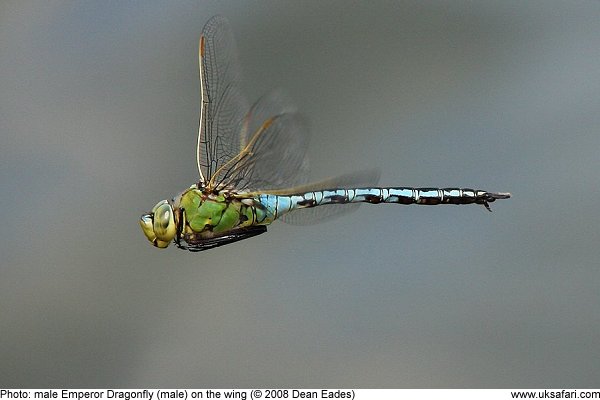
But these insects aren't buzzing around over the water just to enjoy the scenery. They need water to complete their life cycle. Once they've mated dragonflies lay their eggs on, in, or near the water. Most dragonflies deposit their eggs in aquatic plants using an ovipositor situated at the end of their abdomen.
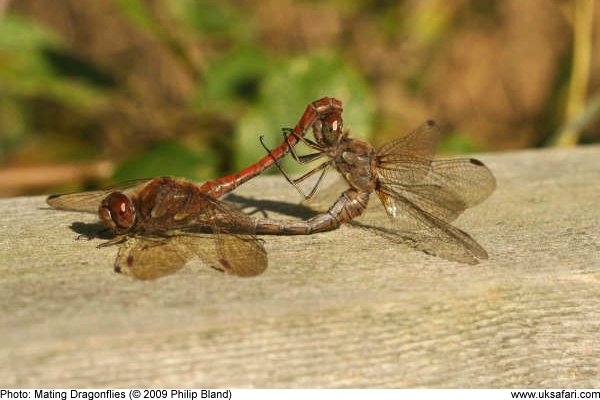
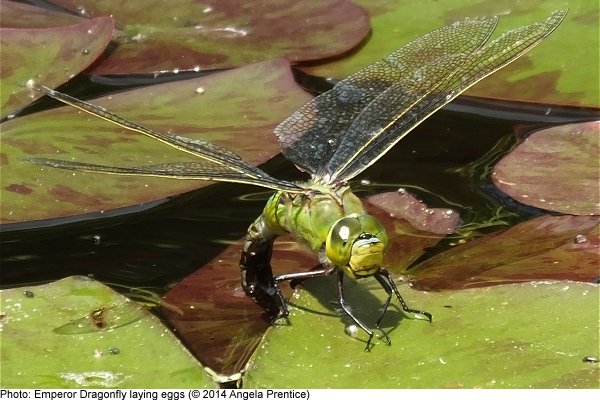
When the larvae hatch from the eggs they live in water for anything between a few months and five years, feeding on aquatic invertebrates, tadpoles and small fish.
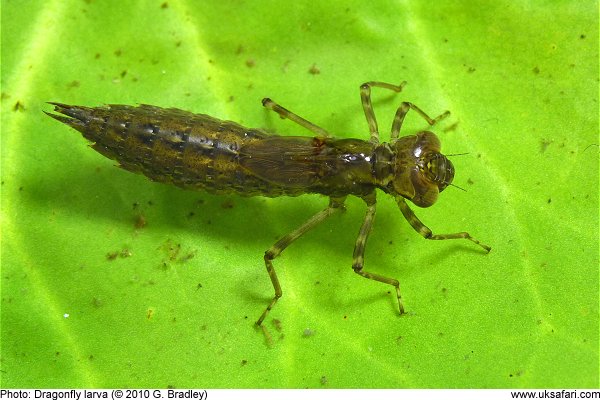
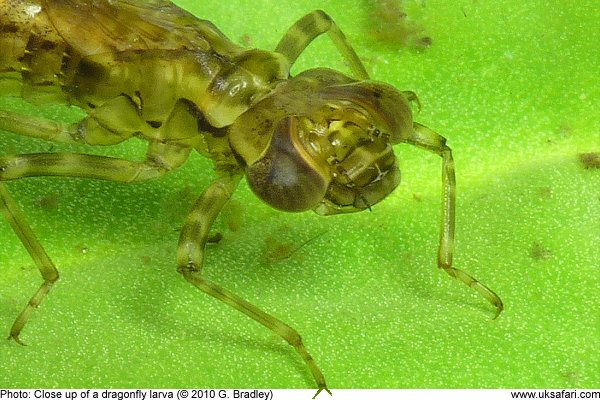
When the time is right the larvae climb out of the water, usually up a plant stem, and then the larval casing splits open and the adult dragonfly starts to emerge.

When it is almost fully out of the larval case it rests to give its legs time to harden. Once the legs are strong enough it can leave the casing completely by pulling itself upright. It then rests again to allow its wings to fully expand and dry. The whole process can take a couple of hours.
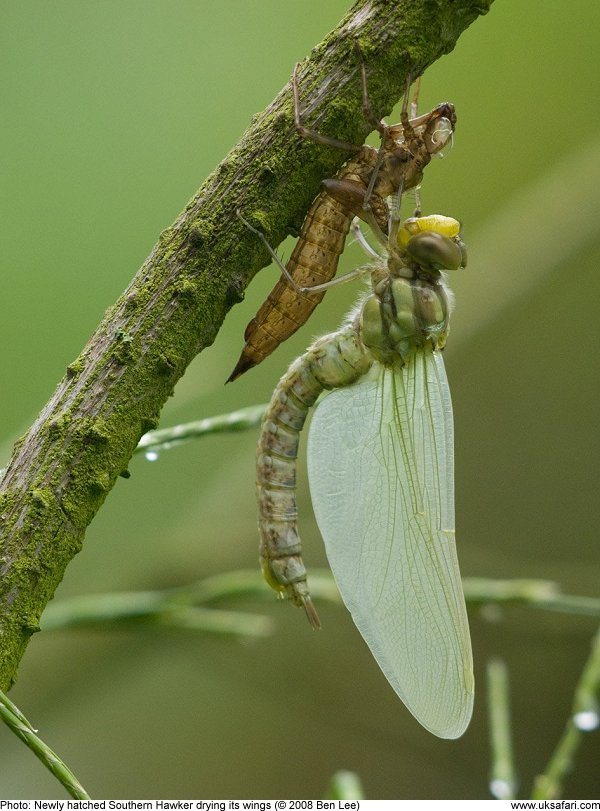
The life span of the adult dragonfly is fairly short, and most live for less than eight weeks.

 Popular Pages
Popular Pages
Amphibians, Bats, Badgers, Beetles, Birds, Birds of Prey, Bumble Bees, Butterflies, Caterpillars, Creepy-Crawlies, Deadly Spiders, Dolphins, Dragonflies, E-Postcards, False Widow Spiders, Free Newsletter, Frogs, Fungi, Garden Spiders, Glow-Worms, Grey Squirrels, Hedgehogs, House Spiders, Ladybirds, Mammals, Marine Mammals, Moths, Owls, Reptiles, Spiders, Toads, Trees, Wildlife Hospitals
Copyright © 2020 G. Bradley UK Safari. All rights reserved | About Us | Links | Contributors



 Related Pages
Related Pages
